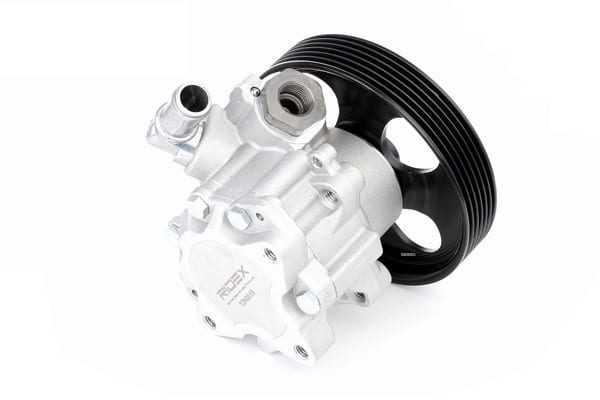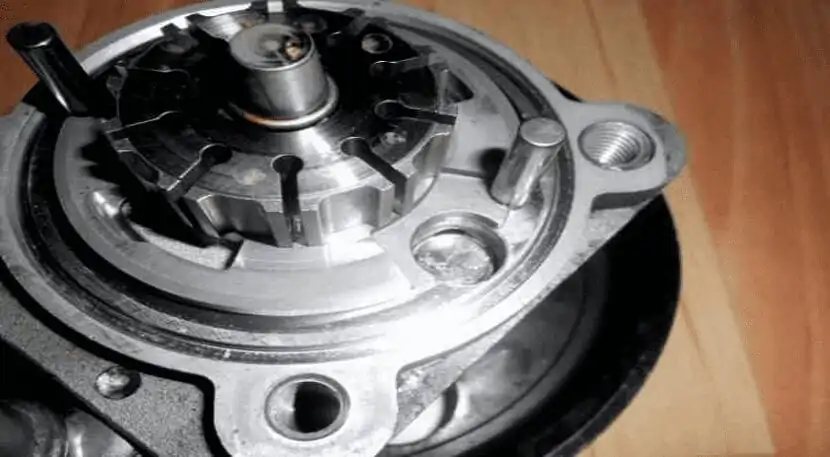
What is a car hydraulic pump?
Content
Hydraulic pumps are used in some of the most critical vehicle systems. Thanks to them, the braking system, steering and other systems important for the operation of the car can work without failures, and the vehicle without breakdowns.
What is a hydraulic pump?
Without a hydraulic pump, the steering wheel cannot turn easily
If you have ever driven a car without power steering, you know how difficult it is to turn the steering wheel, especially at low speeds. Fortunately, the cars we drive today do not have such problems, and the steering wheel turns easily and without problems thanks to ... a hydraulic pump.
How does it work?
Each time you turn the steering wheel of a car, a hydraulic pump delivers fluid (hydraulic) under pressure to the steering link. Since this rod is attached both to the steering wheel and to the gear that drives the wheels, you can easily turn the steering wheel and make driving easier.
They are also used in hydraulic suspension.
Hydraulic suspension is a type of suspension that uses independent shock absorbers. This type of suspension is controlled by a central panel inside the machine, but more importantly, independent suspension shock absorbers use hydraulic pumps to increase and decrease pressure.
What is a hydraulic pump?
Generally speaking, this pump is a type of device that converts mechanical energy into hydraulic energy. When it works, it performs two functions at the same time:
At first, its mechanical action creates a vacuum at the inlet of the pump, which allows atmospheric pressure to cause fluid to pass from the tank to the pump.
Secondly, again, due to mechanical action, the pump delivers this fluid to the pump outlet and makes it “pass” through the hydraulic system to do its job.
By design, hydraulic pumps are divided into several main types:
- Gear pumps
- Plate pumps
- Axial piston pumps
- Radial piston pumps

Why do hydraulic pumps fail most often?
- High load – When the load on the pump is too high, it cannot work effectively, resulting in twisted or broken input shaft, bearing problems, and more.
- Corrosion – over time, corrosion can form on the pump, causing metal corrosion and problems with the pump.
- Lack of fluid – if there is not enough fluid in the pump (lower than normal level) or the hoses are the wrong size and do not provide good fluid flow, this can damage the pump
- Overpressure – The pressure settings have been changed. Hydraulic pumps don't create pressure, they create flow and withstand pressure. When the pressure in the system exceeds the design of the pump, it is damaged
- Pollution - over time, the fluid becomes contaminated and can no longer perform its functions. If the hydraulic fluid does not change over time, then deposits build up over time, which interfere with the effective operation of the pump and stop working properly.
When should the hydraulic pump be replaced?
The good news is that standard hydraulic pumps have a relatively simple and robust design and can last for years. When this time comes, depends on a number of factors, such as driving style, driving intensity, quality and type of pump, etc., etc.
Problems with the hydraulic pump
Symptoms indicating the need to replace the pump:
- When turning, the car seems to oscillate and turn to one side
- When turning, you can hear unusual sounds such as knocking and whistling
- Management is getting harder
- Pump valve stops working efficiently and correctly
- There is a leak of oil or hydraulic fluid
Hydraulic pump repair
Although, as mentioned, this pump has a relatively simple design, if you do not have good technical knowledge, the best solution for you is to seek the help of qualified mechanics to identify and fix the problem. If the problem is not very big, then the pump can be repaired and continue to serve you for a while, but if the problem is big, the pump must be completely replaced.
If you think you have the knowledge and want to try it out, here's how you can repair the steering wheel pump yourself.
Before starting repairs, it is good to check the fluid level in the tank and add a little. Why? Sometimes, when checking, it turns out that the pump is in order, and there is simply not enough fluid, which interferes with its normal operation.
If the problem is not in the liquid, then you need to start the repair.
Basic steps for repairing a steering wheel hydraulic pump:
- Buying parts is usually a problem with bearings, washers or seals, but if you don't want to make a mistake, it's better to buy a whole steering pump kit.
- Tools - prepare wrenches and screwdrivers, mounting rings, a container and a piece of hose to drain the fluid from the reservoir, a clean rag for wiping, a clean piece of cardboard, fine sandpaper
- To carry out repairs, it is necessary to disassemble the pump. To do this, find its location, slightly release the axial bolt securing it to the console
- Use a hose to drain the hydraulic fluid from the pump
- Loosen and remove all bolts and hoses connected to the pump and remove it.
- Thoroughly clean the pump of dirt and oil adhering to it. Wipe with a clean cloth until you are sure that it is clean enough to begin to disassemble.
- Remove the bearing snap ring.
- Loosen the fixing screws on the back cover.
- Carefully disassemble all pump components. Remove the components one by one, remembering to number them and place them separately so that you are not mistaken when installing them.
- Carefully check all parts and lightly wipe them with sandpaper.
- Inspect the defective pump components and replace the defective parts with new ones.
- Reassemble the pump in the reverse order.
- Replace it, reconnect all the hoses, make sure that you have properly tightened all the bolts and nuts, and fill up with fluid.
- If you succeed, you already have a perfectly working hydraulic pump on the steering wheel of your car.

If after removing the hydraulic pump it turns out that there are a lot of parts that need to be replaced, just replace it with a new one. If you decide to do this, you must be very careful in your choice.
Take the time to look at the different models, see if they are suitable for your car model, and if it is difficult for you to make your own choice, contact the manufacturer of the car for recommendations or consult a qualified mechanic or an employee in the auto parts store.
Carefully choose and make purchases only in specialized stores that probably offer high-quality auto parts. Thus, you will be sure that the new pump that you put in your car is of high quality and will serve you for many years.
The pump is an important part of the brake system.
Perhaps one of the most important pumps in a car is the one in the car's brake cylinder. This cylinder is responsible for pushing brake fluid through the brake lines to the brake calipers so that the vehicle can stop safely.
The hydraulic pump in this cylinder creates the necessary force (pressure) to allow the brake calipers to drive discs and pads to stop the car. In this direction, the hydraulic pump plays an extremely important role in the uninterrupted and faultless operation of the vehicle's brake system.
Questions and answers:
What is hydraulics in simple terms? This is a system that transfers forces from the drive to the actuator (pedal - brake caliper) through a closed line filled with working fluid.
What is a hydraulic machine for? Such a unit is capable of moving liquid or gas and at the same time generating energy due to the action of the moved liquid on its impeller (for example, a torque converter in an automatic transmission).
What are the hydraulic machines? Hydraulic machine with blades or plates, with radial-plunger or axial-plunger mechanism, hydraulic motor, torque converter, screw supercharger, hydraulic cylinder.
One comment
Vahid
Thanks it was very informitic